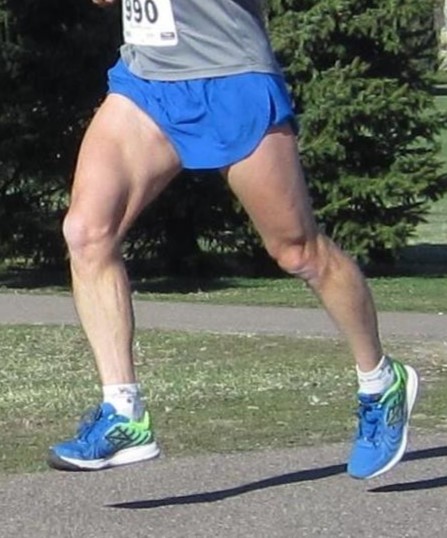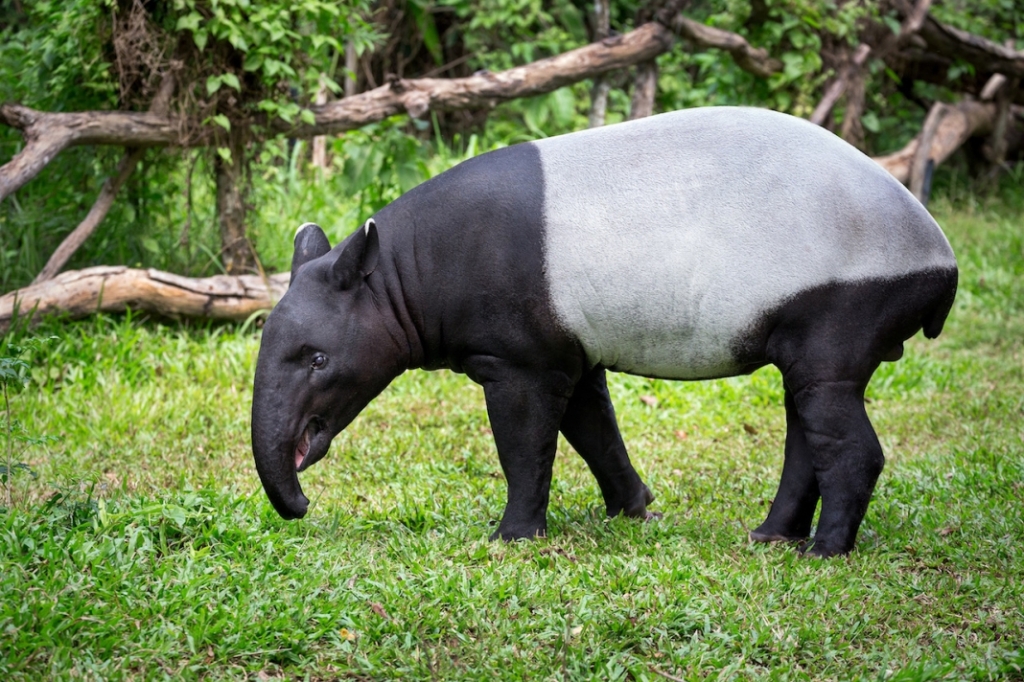There are two ways to go faster – take longer or faster strides. Changes in stride length are largely dictated by fitness, strength, and flexibility. However, you can increase your speed by increasing you stride rate without a big increase in fitness.
At 8:00/mile pace, taking 80 strides/minute (spm, left-right = one stride), you will take 640 strides (1,280 steps) in a mile, 4’ 1.5” per step. With just a small increase to 82spm, without a change in stride length, you will cover a mile in 7:48. That’s 1:13 faster for a 10km, over 5 min faster for a marathon. Who wouldn’t take that?

One of the most visible differences between elites and most other runners is their stride rates. Elite runners do ~90spm in marathons, faster in shorter races, and increase their stride rate when kicking. The average runner may only have a stride rate in the low 80s, and it may not vary much with speed or distance.
A faster stride rate not only makes you run faster, but it is more efficient. The biggest difference between 80spm and 90spm is how much time your feet are on the ground. The more time on the ground, the more momentum you lose actually slowing yourself down. You are absorbing more of the ground impact in your muscles, joints, and shoes rather than transferring that force into forward movement.
Counting
The first thing to do is to count your strides while you run. The purpose is to do two things. First, find out where you are. Second, the simple act of counting will make you more aware of your stride rate, and tend to make you start to stride faster.
Count for a minute or two. Do it a few times during your runs, and at different types of runs. Note how your stride rate differs over pace, terrain, and fatigue. Also note how different stride rates feel. Most newer running watches count strides for you making this easy. Log these counts as your base rate, then track your progress over time.
Many of you may have heard that 90/180spm is an ideal stride rate. Wrong. There is no one ideal rate for all runners. That’s like saying there is an ideal way to sing regardless of whether you are a baritone or soprano. We have different muscle types, joint alignment, flexibility, etc. If you are significantly below 90/180, training to increase your tempo is something you would probably benefit from. If your stride rate is already fast, there are other things that may be better to work on. Regardless, think about improving incrementally rather than hitting a specific number.
Striders
Add Striders to your training, focusing on stride rate. For those who don’t know what Striders are, it’s a series of short sprints. Many group track workouts incorporate Striders into their warm-ups. They’ll sprint the straights, and jog the curves. You don’t need a track to do this. All you need is a fairly flat and smooth area, where you sprint for 20-40 strides, and jog for 30-60 strides (same distance, about 50% more strides).
Gradually build your speed for the first half (50m on the track), carry that speed to the finish, then gradually slow down. The focus shouldn’t be on how fast you can stride rather how fast you can. Keep your stride short and quick. Imagine running on hot coals so that you want to lift your feet as soon as they hit the ground. Does that mean making your stride shorter? It’s not about shortening your stride, but on how quickly you can stride off after landing. What will happen is that when you start your sprint, your stride may be shorter, but as you speed up your stride, your stride will naturally lengthen.
You can also do striders at the end of easier, shorter runs, as well as in the middle (part) of your longer runs.
Striders are a great warm-up before a speed workout or race. After the easy jog part of your warm-up, a minute or two before the start of intervals, a few minutes before the start of a race (especially shorter/higher effort races), do a series of striders (4-8, depending on weather and how hard you are going to run).
Don’t reach with your stride. Let me repeat that. DON’T REACH!
Stairs
Running stairs can force you into a quicker stride. Bleachers/stadiums, office buildings, and for those of you in the Denver area, Red Rocks Amphitheatre are good places to run stairs. At Red Rocks (the side stairs, not the bleachers), I can easily take 2 or 3 stairs per step. However, I usually choose to take only one per step, forcing me into a short, quick, and light stride. If you don’t have access to stairs, you can get the same effect on a smooth, steep hill, but you have to consciously force yourself to take quick strides like running on hot coals.
Hills, up and down
Running hills, both up and down, tends to magnify flaws in your form, making them easier to feel and work on. Running uphill, the time your foot spends on the ground exaggerates the loss of momentum. Downhill, it exaggerates the pounding and braking.
Uphill: Find a fairly steep hill, not too technical, that you can run and maintain decent form). Start by running in place, with short, quick strides (sort of like a running start), lean forward, skip and/or stutter step, then start moving forward. The skip/stutter step gets you into a quick, stride mode. Stride as quickly as you can, a little more than is comfortable (like striders). Exaggerate your arm swing, focusing a little more in the backwards swing of the arm. Drive your knees up and forward. Run until your form and rhythm starts to break, usually around 20 seconds.
Downhill: It can be easier to get a fast stride rate going downhill. Find a gradual, smooth downhill grade where you don’t have to worry about footing or braking. Lean forward, bending at your ankles, not your waist. As you start to fall, start striding. Start slowly and gradually pick up the pace. Focus on lifting your feet as soon as they touch the ground (like running on hot coals). Let gravity do the work moving you forward. Keep your feet moving to keep from falling over.
More Spring in your Stride
When your feet hit the ground, your feet and calves absorb some of the force, then should return it like a spring to propel you forward. You can improve your springiness by practicing dynamic, spring-like exercises.
Jumping rope is a great exercise for this. You have to spring up quickly off the balls of your feet. You don’t have to actually jump rope. Simply hopping in place is good.
You can do something similar with a stair, or other stable, fairly low platform. Stand on the lowest stair. Hop down, then quickly hop back up. Don’t let your heels touch the ground, and spring up as soon as your feet hit the ground at the bottom.
Another drill, on stairs or a curb, is to start with one foot up on the stair/curb and one down. Quickly, alternate feet up and down, switching as soon as you land.
Listen to the Music
For some, running to the beat can help their stride rate. I don’t listen to music when I run, so I can’t speak from personal experience, but I know many of you do. You can program your own tunes. Note the beat of those tunes, and load music with a slightly faster beat than your base spm. You can also buy music programmed for specific beat rates. A metronome might help too, when running on a treadmill.
Ultras
It can be hard to maintain a high stride rate in ultras, especially when hiking. This is still worth working on. The less time you spend on the ground, the more efficient you will be. When the hill is steep and long, when you’re tired, it’s turnover, not power, that keeps my momentum going. Training a higher tempo will make relatively faster ultra spm seem easier.
Personal Experience
In the 1980s, when I was mainly doing triathlons, I used to do 80spm regardless of whether I was running at a 5:30 or 8:30 pace. I was so consistent that I could accurately time my runs by counting my strides – 400 strides and I’d be within a second or two of 5 minutes.
I started working on my stride rate many years ago. I regularly do striders and uphill sprints. When doing striders and hill sprints, I focus more on leg turnover than speed. When doing intervals, the focus is equal. Now, I do ~100spm on 30-second hill sprints and striders, close to 90 for a 5km, high 80s for a ½-marathon. It’s still a work in progress.
Changing your stride rate doesn’t happen over night. But it can happen over time, with practice.
Striding faster will make you a faster and more efficient runner, without requiring you to get a lot fitter. It takes time and practice, but the ability to increase your stride rate is important for all runners. Start practicing. I’m counting on you.
Train Smart. Have Fun. See you on the trails and roads.
https://runuphillracing.com/
When in doubt, run uphill!


